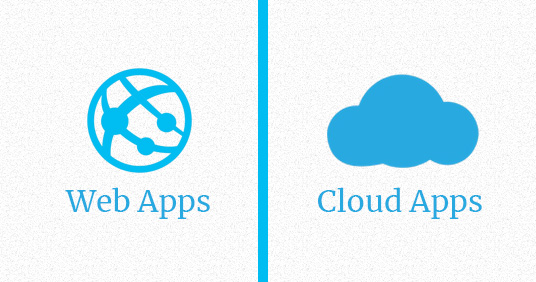The line between a web app and a cloud app remains as blurry as ever. These days, both terms are used interchangeably. However, there are noteworthy differences, especially when looking to leverage cloud apps for richer user customization experience.
While all cloud apps are web apps, i.e. all cloud apps run on web, but not all web apps are cloud apps. To look more deeply, let’s define both terms and see what the characteristics of web apps and cloud apps are.
Web Applications:
Web apps are generally built for a given platform and are limited by the scalability and availability of the platform. A combination of a server-side script and a client-side script is commonly used to build the application. The web browser relies on the components of a web server, installed on back-end systems for providing its core functional web services. Online banking systems, flight checking systems, Facebook and Twitter are some of the examples of web apps.
• These apps establish a unique relationship and a session with each and every visitor.
• These apps allow users to create, manipulate, and store data.
• These apps are accessible from anywhere via a web browser.

Cloud Applications:
On the other hand, a cloud app is an evolved web app. It is equally used to access online services over the Internet like web apps but not always exclusively dependent on web browsers to work. For example, Dropbox is a cloud app. It can be installed like desktop softwares. A user can still access its data on Dropbox if there is no internet connection available.
• Data can be cached locally for full-offline mode.
• These apps provide support for different user requirements such as data backup and data compression.
• These apps can be used from a web browser and/or custom built apps installed on internet-connected devices such as desktops, mobile phones etc.
There are significant differences between web apps and cloud apps. Think wisely before choosing web development services of a company.

